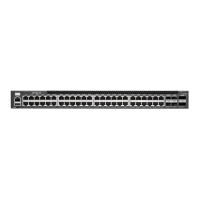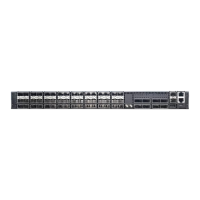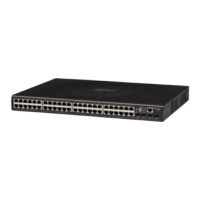Chapter 29
| IP Routing Commands
Policy-based Routing for BGP
– 1007 –
site are assigned the same site of origin attribute, no matter if a site is
connected to a single PE router or multiple PE routers. Filtering based on this
extended community attribute can prevent routing loops from occurring when
a site is multi-homed.
Example
Console(config)#route-map RD permit 13
Console(config-route-map)#match peer 192.168.0.99
Console(config-route-map)#set extcommunity 100:0 192.168.1.1:1
Console(config-route-map)#
set ip next-hop This command sets the next-hop for a routing message. Use the no form to remove
this entry from a route map.
Syntax
set ip next-hop {ip-address | peer-address}
no set ip next-hop [ip-address]
ip-address – An IPv4 address of the next hop, expressed in dotted decimal
notation.
peer-address – Sets the next hop as the BGP peering address.
Command Mode
Route Map
Command Usage
◆ The IP address specified as the next hop need not be an adjacent router.
◆ When this command is used with the peer-address keyword in an inbound
route map received from a BGP peer, the next hop of the received matching
routes are set to be the neighbor peer address, overriding any other next hops.
◆ When this command is used with the peer-address keyword in an outbound
route map for a BGP peer, the next hop of the advertised matching routes will
be set to be the peering address of the local router, thus disabling next hop
calculation. This command therefore has finer granularity than the neighbor
next-hop-self command, because it can set the next hop for some routes, but
not others. While the neighbor next-hop-self command sets the next hop for all
routes sent to the specified neighbor(s).
Example
Console(config)#route-map RD permit 14
Console(config-route-map)#match peer 192.168.0.99
Console(config-route-map)#set ip next-hop 192.168.0.254
Console(config-route-map)#

